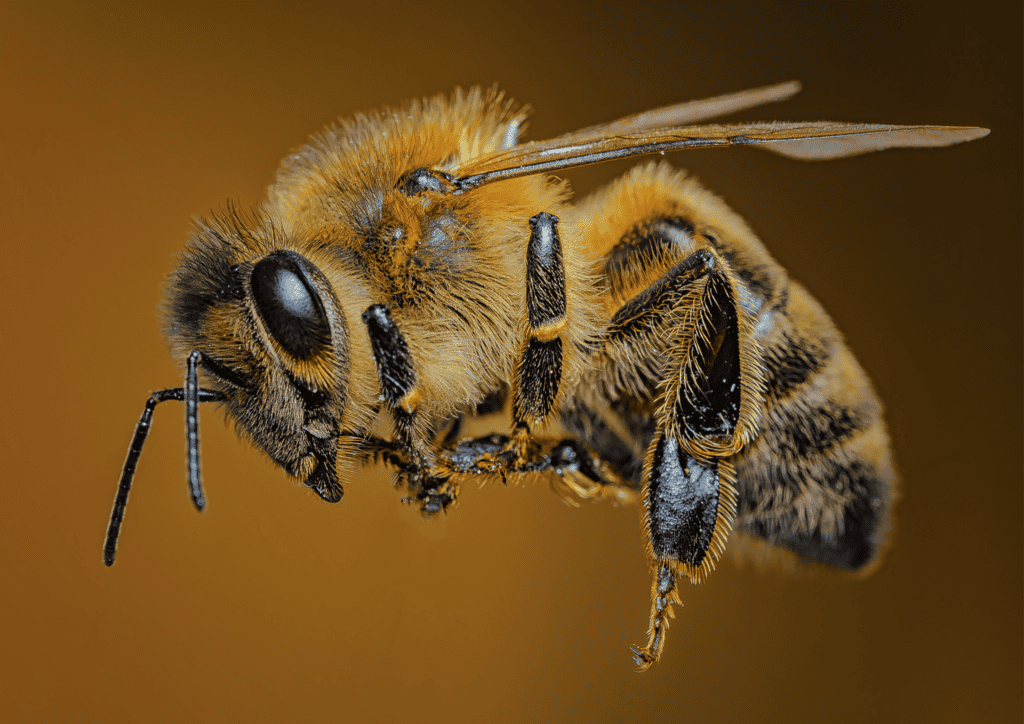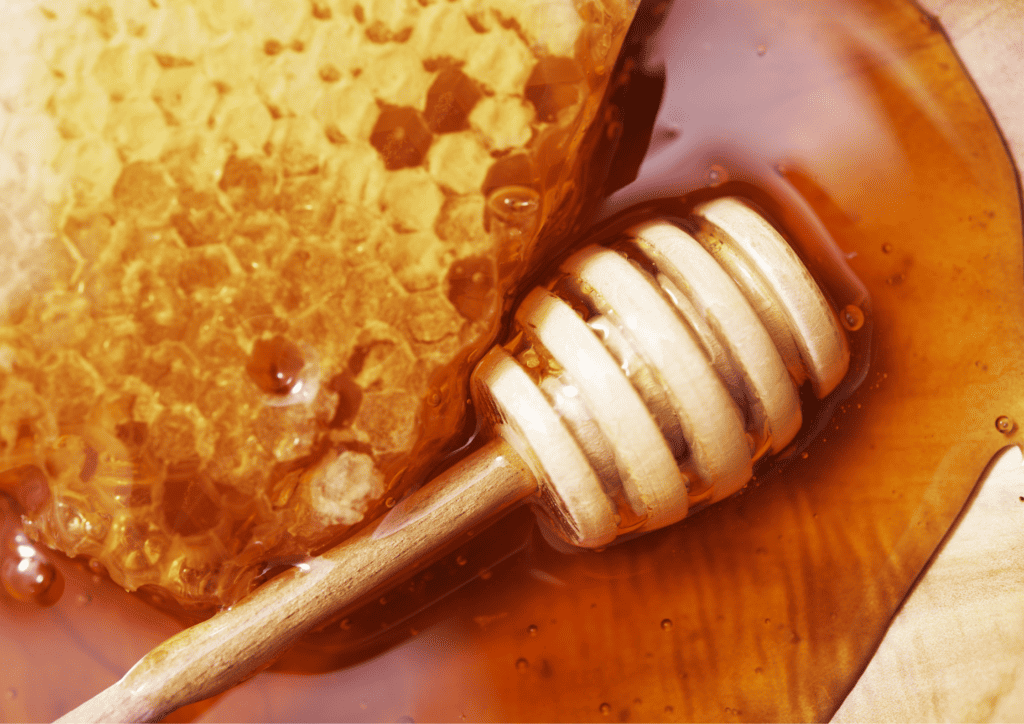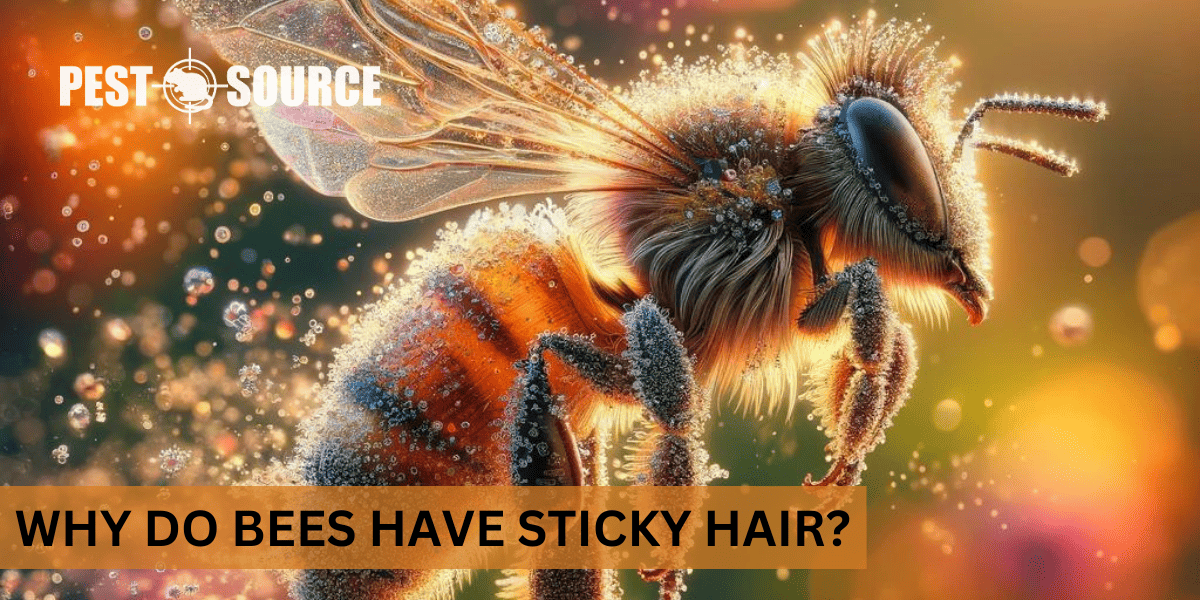Bees have sticky hair to help collect pollen more effectively as they move from flower to flower. This feature enhances their ability to pollinate plants and transport pollen back to the hive for food. Read on to discover the intricate relationship between bees’ physical adaptations and their crucial role in our ecosystem’s health and agricultural productivity.
POINTS
- Bee hair is sticky due to its branched structure and electrostatic charge, which helps in the collection and transfer of pollen during the pollination process.
- The stickiness of honey is attributed to its composition of sugars like glucose and fructose, low water content, and the formation of hydrogen bonds with water molecules.
- Bees meticulously groom their hair using their legs, which are equipped with specialized structures like pollen combs and brushes, to maintain their hair’s functionality for pollination and to manage its stickiness.
- Researchers collect bee hair to analyze pollen grains and other particles that stick to it, providing insights into foraging patterns, bee behavior, and the health of ecosystems.
- Educational riddles and jokes about bees, such as “Why do bees have sticky hair?” and “Why do bees buzz?”, serve as tools to engage and educate people about bees in a memorable and entertaining way.
Why Are Bees Hair Sticky
Bees are some of the most industrious creatures on the planet, and their anatomy plays a critical role in their ability to pollinate plants. One fascinating aspect of their anatomy is their hair, which appears to be sticky. But have you ever wondered why?
The Biological and Ecological Reasons Behind Sticky Bee Hair
Bees are covered in tiny hairs, scientifically known as setae, which serve multiple purposes essential to their survival and ecological roles. These hairs are not sticky in the way we might think of substances like glue or syrup, but they do have an affinity for pollen.
The Anatomy of Bee Hair

Bee hair is uniquely structured to assist in the collection of pollen. Each strand of hair is branched, with even smaller branches called microtrichia. This elaborate structure increases the surface area available to trap pollen grains. Additionally, bees have a slight electrostatic charge, which attracts pollen particles, much like a balloon rubbed against hair can attract small bits of paper.
Role of Hair in Pollination
As bees move from flower to flower, their hairy bodies pick up pollen from the male parts of a plant and deposit it on the female parts of another, facilitating cross-pollination. This process is crucial for the reproduction of many plants and the production of fruits and seeds.
The Science of How Pollen Sticks to Bee Hair
Pollen grains themselves are designed to stick to bee hair. They have various shapes and textures, often with spiky or sticky coatings, that latch onto the bee’s hairs. Some plants have even evolved specifically to have pollen that is more likely to stick to a bee’s body, ensuring their species’ pollination and survival.
By understanding the intricate relationship between bees and their sticky hair, we can appreciate the delicate balance of our ecosystem and the critical role bees play in sustaining it.
Why Do Bees Have Sticky Hair Riddle
While the scientific explanations for bees’ sticky hair are fascinating, there’s also a place for humor and riddles when learning about these incredible insects. One popular riddle plays on the concept of sticky hair in bees and serves as both an educational tool and a source of entertainment.
“Why do bees have sticky hair?” This riddle may sound like the setup for a joke, but it’s actually a playful way to engage people in learning about bees. The answer, “Because they use honeycombs,” brings a touch of whimsy to the topic while also referencing the bees’ unique relationship with honey.
Educational and Entertainment Value
This riddle is more than just a clever play on words; it’s often used in educational settings to spark interest in the subject of bees and pollination. It serves as a gentle introduction to the more complex aspects of bee anatomy and behavior, making the topic accessible and memorable, especially for younger audiences.
How Does a Bee Brush Its Hair?
Beyond the humor, there’s a real question about how bees maintain their hair. Bees are meticulous groomers, and their grooming behavior is essential for their health and the efficiency of pollination.
Bee Grooming Behavior
Bees use their legs to clean their hair. Their legs are equipped with specialized structures: the forelegs have antennae cleaners, while the hind legs are designed with pollen combs, brushes, and a pollen press. Bees will often use their forelegs to brush debris from their antennae and eyes, while the hind legs work to comb and clean the hair on their bodies.
Mechanisms for Cleaning Pollen and Debris
The pollen combs on a bee’s hind legs are used to remove pollen from their body hairs. They then transfer the pollen to the pollen baskets, or corbiculae, also located on their hind legs. During this process, bees will press the pollen into these baskets to transport it back to the hive. This grooming is vital not only to keep their hair in optimal condition for pollination but also to collect food for the colony.
The grooming process helps bees manage the stickiness of their hair, ensuring that they can efficiently collect and transport pollen without becoming overly encumbered by it.
Why is Honey Sticky?

Bees’ interactions with their environment are complex, and one of the most well-known substances they produce is honey. The stickiness of honey is a characteristic that has intrigued many, and it also raises questions about its relationship with bee hair.
Honey’s stickiness is due to its unique composition. Primarily made up of sugars like glucose and fructose, honey has a low water content and high viscosity, which results in its thick, sticky consistency. The sugars in honey form hydrogen bonds with water molecules, giving honey its adhesive properties.
Composition and Role in Bees’ Lives
Honey serves as a food source for bees, providing essential nutrients and energy. Its stickiness also plays a role in the hive’s structure and defense. Bees use honey to fill gaps and seal their hive, protecting it from the elements and preventing the invasion of pests.
Connection Between Honey and Bee Hair
While honey is sticky, it does not contribute to the stickiness of bee hair. Bees are careful to keep honey stored in cells within the hive and away from their body hair. If a bee did get honey on its hair, it would clean it off just as it does with pollen and debris.
Honeybee Hair Collection
The study of bees includes examining their hair, and researchers sometimes collect bee hair for analysis. This collection provides valuable insights into the behavior of bees and the environments they interact with.
Process and Purpose of Collecting Bee Hair
Scientists collect bee hair samples using various methods, including gently brushing the bees or using adhesive surfaces that bees come into contact with. The hair is then analyzed to identify the types of pollen bees have collected, which can inform us about their foraging patterns and the health of the local ecosystem.
Sticky Nature of Bee Hair in Research
The sticky nature of bee hair is beneficial to researchers because it allows for an accumulation of environmental data. Pollen grains and other microscopic particles adhere to the hair, providing a record of where the bee has been and what plants it has interacted with. This information is crucial for understanding pollination networks and the impact of environmental changes on bee populations.
How Do Bees Make Wax?
Bees make wax through a fascinating biological process that involves their wax-producing glands. These glands, located on the underside of a worker bee’s abdomen, convert the sugar contents of honey into wax. Consuming honey provides the necessary energy for this conversion. When the wax is produced, it is secreted in the form of tiny flakes. Worker bees chew these wax flakes to soften them and then use the malleable substance to construct the honeycomb structure within their hive.



